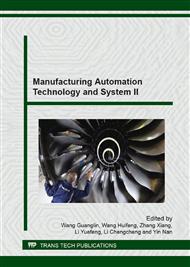p.407
p.413
p.419
p.425
p.431
p.437
p.443
p.450
p.456
Comparative Study on Pressure Field of Hydrostatic Thrust Bearing with Different Recess Shapes
Abstract:
A comparative study on pressure field of hydrostatic thrust bearing with sector recess, rectangular recess, ellipse recess and I-shaped recess is carried out in order to solve the deformation of the hydrostatic thrust bearing. The Finite Volume Method has been used to compute three-dimensional pressure field of gap oil film between the rotation worktable and the base. This study theoretically analyzes the influence of recess shape on the bearing pressure characteristic according to Computational Fluid Dynamics (CFD) and lubricating theory. It has revealed its pressure field distribution law. The simulation results indicate that an improved characteristic will be affected by recess shape easily. Through this method, the safety of a hydrostatic thrust bearing with different recesses can be forecasted, and the optimal design of such products can be achieved, so it can provide reasonable data for design, lubrication, and experiment and deformation computation for hydrostatic thrust bearing.
Info:
Periodical:
Pages:
431-436
Citation:
Online since:
August 2014
Authors:
Price:
Сopyright:
© 2014 Trans Tech Publications Ltd. All Rights Reserved
Share:
Citation:


